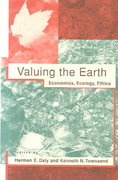..Answer all questions .,
Exercise 8.14 Every year Alf sells apples from his orchard. Although the mar- ket price of apples remains constant (and equal to 1), the output of Alf's orchard is variable yielding an amount R1, Ry in good and poor years respectively; the probability of good and poor years is known to be 1 - a and a respectively. A buyer, Bill, offers Alf a contract for his apple crop which stipulates a down pay- ment (irrespective of whether the year is good or poor) and a bonus if the year turns out to be good. 1. Assuming Alf is risk averse, use an Edgeworth bor diagram to sketch the set of such contracts which he would be prepared to accept. Assuming that Bill is also risk averse, sketch his indifference curves in the same diagram. 2. Assuming that Bill knows the shape of Alf's acceptance set, illustrate the optimum contract on the diagram. Write down the first-order conditions for this in terms of Alf's and Bill's utility functions. D Figure 8.2: Acceptable contractsExercise 8.13 Consider a competitive, price-taking firm that confronts one of the following two situations: . "uncertainty": price p is a random variable with expectation p. . "certainty": price is fixed at p. It has a cost function C(q) where q is output and it seeks to marimise the expected utility of profit. 1. Suppose that the firm must choose the level of output before the particular realisation of p is announced. Set up the firm's optimisation problem and derive the first- and second-order conditions for a marimum. Show that, if the firm is risk averse, then increasing marginal cost is not a necessary condition for a maximum, and that it strictly prefers "certainly" to "un- certainty". Show that if the firm is risk neutral then the firm is indifferent as between "certainty" and "uncertainty". 2. Now suppose that the firm can select q after the realisation of p is an- nounced, and that marginal cost is strictly increasing. Using the firm's competitive supply function write down profit as a function of p and show that this profit function is conver. Hence show that a risk-neutral firm would strictly prefer "uncertainty" to "certainty".6. Write down consumption per worker, G, as a function of k, and the savings rate. Determine the Golden Rule level of the savings rate in this economy. (6 points) Solution. C = (1-8) kp. At the steady state, we have c* = (1 -8) 8 + gN Taking log: In c' = -7 1 - a - In (8 + gN ) + In (1 - s) + 1-a In s. Differentiating it w.r.t. s gives the following first order condition, 1 0 = - So s = 0. 7. Using a Solow diagram, show how the accumulation of capital per worker would change if there were an increase in the population growth rate, g. Provide the intuition. In another diagram, draw the evolution of consumption per worker over time after this change. (8 points) Solution. The increase in gy would shift up the required investment curve, resulting in a lower level of ke and ye in the steady state. Intuitively, the original level of investment is no longer sufficient to keep up with the growing population so capital per worker would fall. Since a = (1 - s) ye, it suffices to study the evolution of y. y = ky was at its steady state level and will change to its new steady state level which is lower. Hence, the evolution of consumption per worker decreases from (1 - s) (k*)" to (1 - s) (k*)". Make sure that the rate of change becomes slower and slower in your graph.Part 2 Consider the endogenous growth model in which time can be used for work (it) or human capital accumulation (1 15). Output is produced according to Y = zuH, where z is total factor productivity and H is the current stock of human capital. The future human capital stock is given by H ' = M] u)H, where 5 represents eiciency in producing new human capital. The initial (current) human capital stock is H = 100. The economy is characterized by the following parameters: b = 6.1, 2 = 15, and u = 0.83. (3.) Calculate future human capital (H '), and the growth rate of human capital. (b) Calculate current output (Y), future output (1\"), and the growth rate of output. How does it compare to the growth rate of human capital? (c) Suppose the government cuts technology funding for education, and as a result b declines to b = 6.0. Calculate the growth rate of output following this change. ((1) Are the growth rates you found in parts a and c the same or different? Explain intuitively why this policy change did or did not a'ect the economy's growth rate. (e) Explain how the decrease in b will affect (if at all) the current levels of human capital, output, and consumption: H, Y, and C. If there is no effect, explain why. (f) Explain how the decrease in b will affect (if at all) the future levels of human capital, output, and consumption: H', Y' , and C' . If there is no effect, explain why. (g) Explain how the decrease in b will affect the growth rates of human capital, output, and consumption. If there is no effect, explain why. (h) Draw a graph of logoutput, ln'), over time for this economy and illustrate how the decrease in b alfects current and future output










